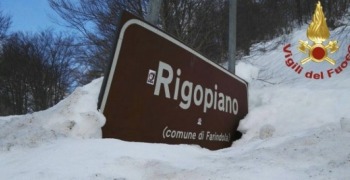#McLarenHonda Scioglie Mistero: "Incidente Fernando #Alonso Per Improvvisa Raffica Vento" @F1_Italia
24 Febbraio 2015 11:13
"I nostri risultati indicano che l'incidente e' stato causato da una imprevedibile raffica di vento in quella parte del circuito in quel momento. Raffiche che avevano colpito altri piloti allo stesso modo, per esempio, Carlos Sainz Jr".
La McLaren, con un comunicato stampa ufficiale pubblicato ieri pomeriggio sul proprio sito, punta il dito contro la fatalità di una forte raffica di vento, come causa dell'incidente occorso a Fernando Alonso nel corso del suo 20esimo giro mentre si apprestava a percorrere la curva 3.
"Siamo lieti di confermare che, rimasto coinvolto in un incidente sulla pista del Circuito di Catalogna (Spagna) il 22 febbraio, Fernando Alonso sta facendo un buon recupero in ospedale, sta chiacchierando con familiari, amici e personale ospedaliero"
rassicura l'attacco del comunicato stampa del team di Woking.
"Dalla scena dell'incidente e' stato portato al centro medico del circuito, dove gli e' stato dato il primo soccorso e, secondo le normali procedure, e' stato sedato in preparazione di un trasporto in elicottero in ospedale. In ospedale e' stata effettuata un'analisi approfondita e completa della sua condizione, coinvolgendo TAC e risonanza magnetica, tutti erano del tutto normale"
spiega la McLaren.
"Al fine di fornire la privacy e la tranquillita' necessaria per favorire un tranquillo recupero, Alonso e' stato tenuto in ospedale per ulteriori osservazioni, e per riprendersi dagli effetti del farmaco usato per la sua sedazione di routine. Abbiamo intenzione di dargli tutte le possibilita' di fare un rapido e completo recupero, e valuteremo a tempo debito se partecipera' al prossimo test di Barcellona"
scrive il team britannico, prima di dare la propria motivazione all'uscita di pista dell'asturiano.
"Barcelona, February 23rd
We are pleased to confirm that, having been involved in an on-track incident at the Circuit de Barcelona-Catalunya (Spain) on February 22nd, Fernando Alonso is making a solid recovery in hospital, and is chatting to family, friends and hospital staff.
From the scene of the incident he was driven to the circuit’s medical centre, where he was given first aid and, as per normal procedures, was sedated in preparation for an air-lift to hospital.
In hospital a thorough and complete analysis of his condition was performed, involving CT scans and MRI scans, all of which were completely normal.
In order to provide the privacy and tranquillity required to facilitate a peaceful recuperation, he is being kept in hospital for further observation, and to recover from the effects of the medication that successfully managed his routine sedation yesterday.
We intend to give him every opportunity to make a rapid and complete recovery, and will evaluate in due course whether or not he will participate in the next Barcelona test.
Over the past 24 hours, we have been carrying out a detailed analysis of the damage to Fernando’s car, and its associated telemetry data, in order fully to understand the cause, or causes, of his accident. Even at this early stage, we have been able to reach some firm conclusions.
His car ran wide at the entry to Turn Three – which is a fast uphill right-hander – allowing it to run onto the Astroturf that lines the outside of the track. A consequent loss of traction caused a degree of instability, spitting it back towards the inside of the circuit, where it regained traction and struck the wall side-on.
Our findings indicate that the accident was caused by the unpredictably gusty winds at that part of the circuit at that time, and which had affected other drivers similarly (eg, Carlos Sainz Jnr).
We can categorically state that there is no evidence that indicates that Fernando’s car suffered mechanical failure of any kind. We can also confirm that absolutely no loss of aerodynamic pressure was recorded, which fact indicates that the car did not suffer any aerodynamic loss, despite the fact that it was subjected to a significant level of g-force. Finally, we can also disclose that no electrical discharge or irregularity of any kind occurred in the car’s ERS system, either before, during or after the incident.
That last point refutes the erroneous rumours that have spread recently to the effect that Fernando was rendered unconscious by an electrical fault. That is simply not true. Our data clearly shows that he was downshifting while applying full brake pressure right up to the moment of the first impact – something that clearly would not have been possible had he been unconscious at the time.
Our data also confirms that Fernando’s car struck the inside concrete wall, first with its front-right wheel and then with its rear-right. It was a significant lateral impact, resulting in damage to the front upright and axle.
After the initial impact, the car slid down the wall for about 15 seconds before coming to a halt. All four wheels remained attached to the car, but no damage was sustained by the bodywork or crash structure between the front and rear wheels.
We wish Fernando a very speedy recovery. As and when we have further updates to share, we will of course do so".
Fernando is conscious and is speaking. He has been airlifted to hospital for further checks.
— McLaren (@McLarenF1) 22 Febbraio 2015
That’s the end of our programme here at the first Barcelona test. Thank you for all your messages of support for Fernando.
— McLaren (@McLarenF1) 22 Febbraio 2015
Hora de comer! Muchas gracias por vuestro apoyo! Lunch time! Thank you for your support! pic.twitter.com/v6cUCfKXNL
— Luis Garcia Abad (@lsgrcbd) 23 Febbraio 2015
















